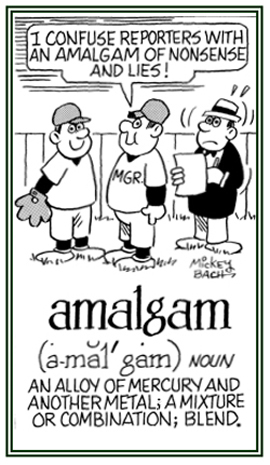2. Any alloy (or "mixture of metals") of mercury with another metal or other metals: Pure metals are rarely ever used, instead they are deliberately mixed in order to produce hundreds of new substances with desirable qualities that are not available except with amalgams.
The term amalgam has been used for more than 150 years in dental restorations; only gold has been used longer for this purpose.
Are Amalgam Fillings in the Teeth a Danger to One's Health?
It is silver amalgam (mercury plus several metals, mainly silver) and no silver by itself that is used for "silver fillings" in teeth.
The amalgam is soft enough to knead (squeeze or press) into the cavity, while chemical reactions harden it after waiting for a short time.
It is known that a fraction of the mercury in amalgam is absorbed by the body and that people with amalgam restorations in their teeth have higher concentrations of mercury in various tissues (including the blood, urine, kidneys, and brain) than people without amalgam fillings.
It was not until about 1980 that serious consideration was given to the possibility that mercury vapor escaping from amalgam fillings might be affecting health, specifically producing subtle effects on the central nervous system. Such effects have been reported among dentists and other dental personnel, whose exposures are well below industrial levels but above those from fillings alone.
In 1993, the Public Health Service of the U.S. Department of Health and Human Services published a report acknowledging that scientific data are insufficient to conclude that amalgam fillings have compromised health. Furthermore, there is no evidence that removal of amalgam fillings has a beneficial effect on one's health; however, there are others who claim that over time, there is serious health damage.
Apparently, further studies will be needed to determine whether the combined exposure to the metals in dental amalgam may lower a person's condition for adverse immunological reactions.

Go to this Word A Day Revisited Index
so you can see more of Mickey Bach's cartoons.
Copper amalgam usually stays in place after it has been inserted into the tooth cavity.
